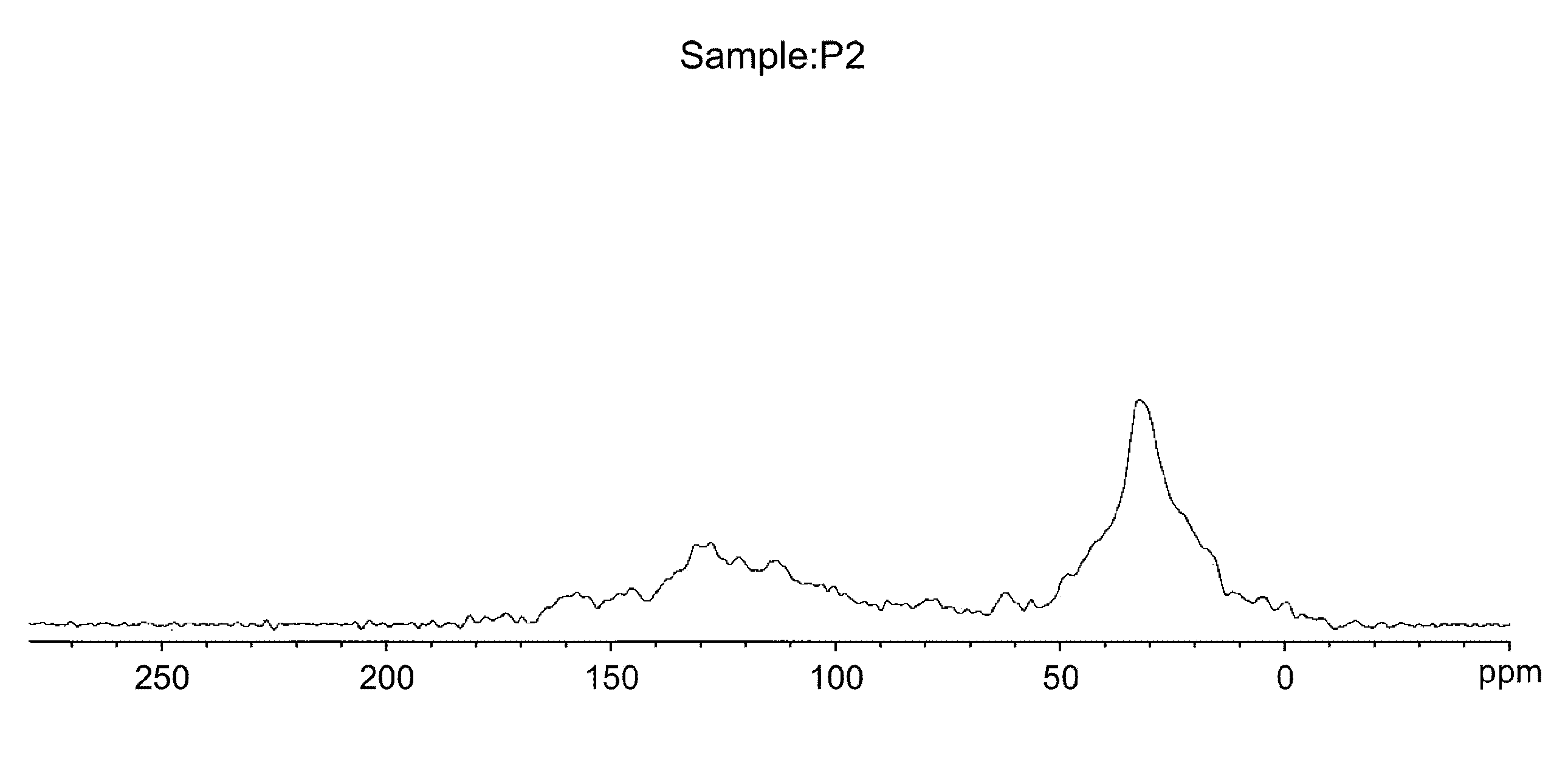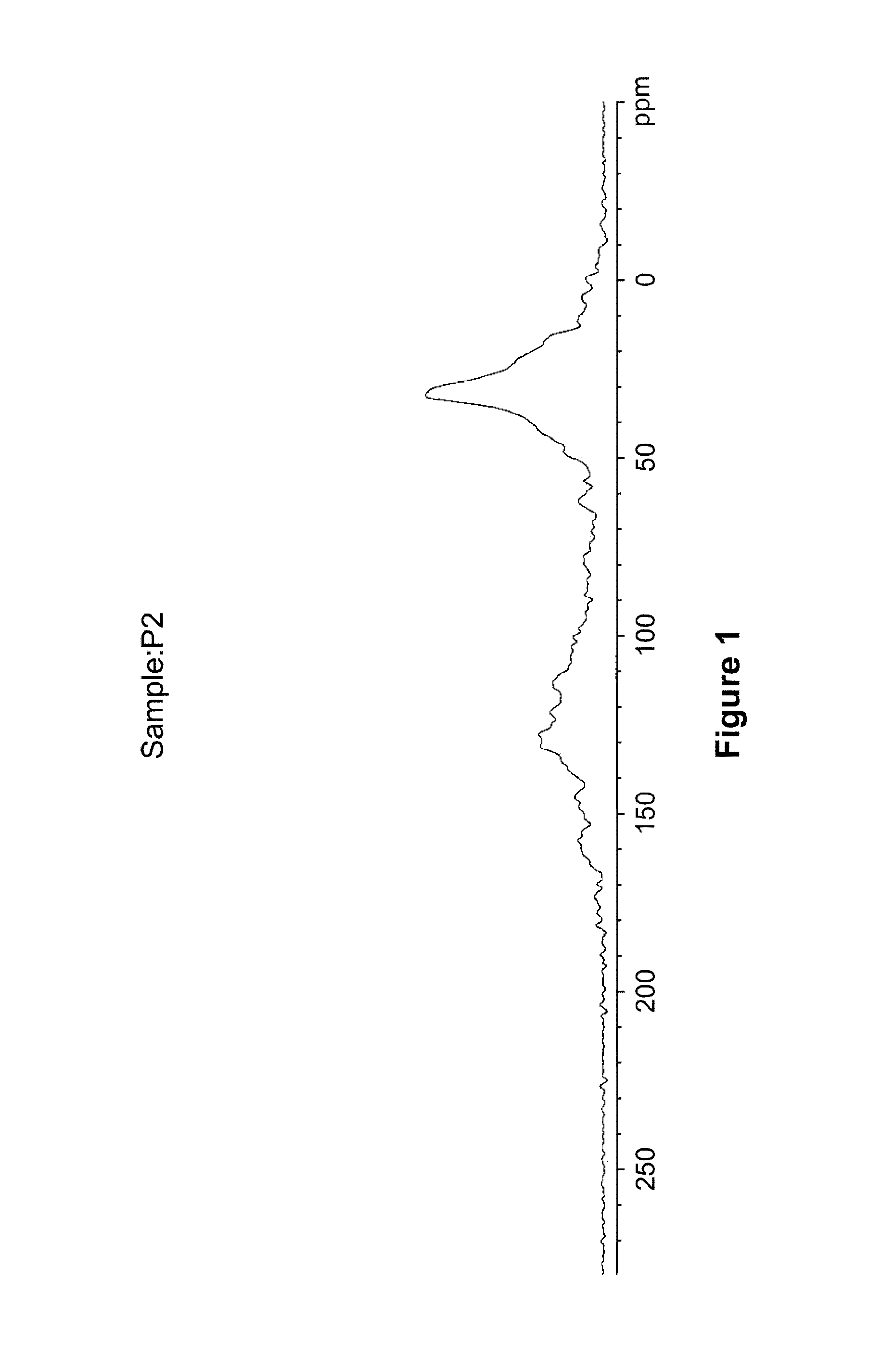Efficient phosphate group fertilizers
a phosphate group and fertilizer technology, applied in the field of efficient phosphate group fertilizers, can solve the problems of lignite consumption, and achieve the effect of increasing the amount of phosphate available to plants and enhancing microbial growth
- Summary
- Abstract
- Description
- Claims
- Application Information
AI Technical Summary
Benefits of technology
Problems solved by technology
Method used
Image
Examples
example 1
[0045]To produce phosphatic fertilizers, lower molecular weight organic molecules derived from lignite (see, e.g., PCT / IB2007 / 003324), are added either by addition to existing phosphatic fertilizer or adding to orthophosphoric acid or rock phosphate to produce efficient phosphate fertilizer. About 1-20% w / w of lower molecular weight organic molecules derived from lignite (below 5000 Daltons molecular weight) were added. Laboratory studies were made for estimation of water soluble phosphorous in soil at periodical intervals (24, 48, 96, 144, 168 and 216 hours after fertilizer treatment) with the above prepared products with corresponding controls (DAP and SSP). A quantity of 50 mg and 100 mg each product added to 100 g soil followed by 50 ml of water. For estimation of water soluble phosphorus, 2 ml of soil water suspension was taken and centrifuged. The supernatant liquid of 0.5 ml was taken and estimated the available phosphorus as per the procedure laid out by Olson et al. These a...
example 2
[0046]To 1.0 kg of lignite, 1.44 liter of ammonium hydroxide was added in small quantities and mixed thoroughly. Mild ammonia vapors were released due to reaction and mixing. Lignite powder slowly became a paste and then a solution. 600 ml water was added to the mixture and thoroughly 600 ml phosphoric acid was added to the solution. The temperature of mixture increased 80 to 90° C. Acidic fumes were released due to reaction and mixing. The pH of the solution dropped to 6.75. Ammonium hydroxide was added to increase pH of the solution to 7.0-7.5. Product was dried to remove moisture and the powder was pulverized.
[0047]This product resulted in enhancement of crop yield in chillies up to 20%.
example 3
[0048]To 1.0 kg of lignite, 4.0 liter of ammonium hydroxide was added in small quantities and mixed thoroughly. Mild ammonia vapors were released due to reaction and mixing. Lignite powder slowly became a paste and then a solution. 1300 ml water was added to the mixture and thoroughly 1300 ml phosphoric acid was added to the solution. The temperature of the mixture increased 80 to 90° C. Acidic fumes were released due to reaction and mixing. The pH of the solution dropped to 6.75. Ammonium hydroxide was added in quantities to increase pH of the solution to 7.0-7.5. Product was dried to remove moisture and the resulting powder was pulverized.
[0049]This product resulted in enhanced yield more than 25% over farmer recommendation on groundnut crop.
PUM
| Property | Measurement | Unit |
|---|---|---|
| molecular weight | aaaaa | aaaaa |
| molecular weight | aaaaa | aaaaa |
| temperature | aaaaa | aaaaa |
Abstract
Description
Claims
Application Information
 Login to View More
Login to View More - R&D
- Intellectual Property
- Life Sciences
- Materials
- Tech Scout
- Unparalleled Data Quality
- Higher Quality Content
- 60% Fewer Hallucinations
Browse by: Latest US Patents, China's latest patents, Technical Efficacy Thesaurus, Application Domain, Technology Topic, Popular Technical Reports.
© 2025 PatSnap. All rights reserved.Legal|Privacy policy|Modern Slavery Act Transparency Statement|Sitemap|About US| Contact US: help@patsnap.com



